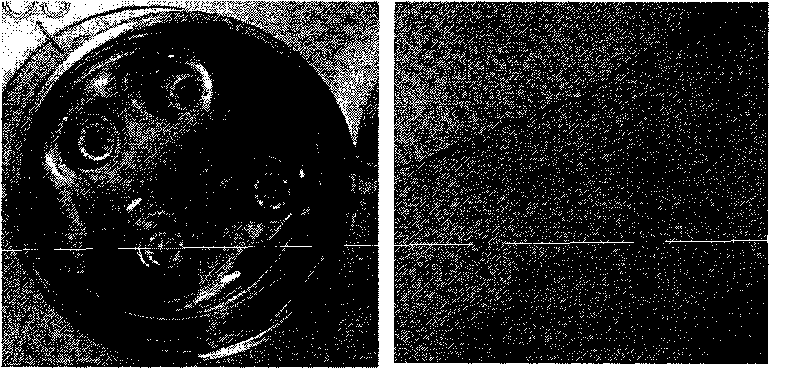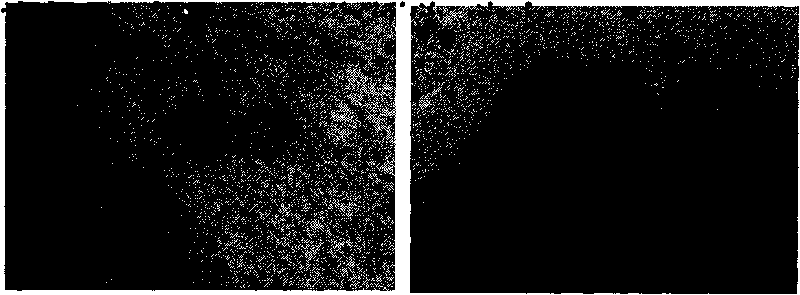Artificial uterus three-dimensional gel model used for researching development and differentiation of embryonic stem cells
A technology of embryonic stem cells and uterus, applied in a series of key technical fields, can solve problems such as lack of bionic conditions
- Summary
- Abstract
- Description
- Claims
- Application Information
AI Technical Summary
Problems solved by technology
Method used
Image
Examples
Embodiment 1
[0041] The workflow of the three-layer tissue-engineered artificial uterine sheet constructed in vitro is as follows: figure 1 shown. The details are as follows: Mix the type I liquid collagen and Matrigel glue evenly at a ratio of 4:1, then mix it with the DMEM-F12 concentrated culture solution containing uterine smooth muscle cells in equal volume, and adjust the pH value of the mixture to 0.1M NaOH. 7.2 to 7.4, add to the prepared 12-hole plate mold, inject 0.4ml into each hole. Place it at 37°C, 5% CO 2 After incubating in the incubator with 5mim liquid complex solidified, take it out. According to the same method, uterine stromal cells were added on the surface of the solidified smooth muscle cells, and after solidification, endometrial epithelial cells were added in the same method. Make a three-dimensional three-dimensional artificial uterus three-dimensional gel model (such as figure 2 shown). Add estrogen and progesterone to regulate the cycle of uterine prolife...
Embodiment 2
[0042] Example 2. Embryonic stem cells were introduced into the in vitro bionic model in two ways: surface inoculation or internal uniform compounding:
[0043] 1) Inoculate embryonic stem cells on the surface of uterine slices: inoculate embryonic stem cells in the form of single cells on the surface of prepared uterine slices (such as image 3 shown), to observe the embryoid body-like embryoid stem cells formed in suspension to implant into the uterine sheet, and to observe the phenomenon of differentiation and development in the sheet;
[0044] 2) Mix embryonic stem cells with endometrial cells in the form of single cells, add them to the collagen gel, adjust the pH to neutral with 0.1mol / L NaOH, and then add 10% Matrigel at a ratio of 4:1 to construct the embryo Stem cells are combined with the uterine sheet, and the differentiation and development of embryonic stem cells in the uterine sheet is observed (such as Figure 4 shown).
Embodiment 3
[0045] Example 3. Research on induced differentiation and development of embryonic stem cells:
[0046] In the established uterine differentiation and development model of embryonic stem cells, different inducers were added to observe the ability of embryonic stem cells to differentiate and develop into different adult cells. Figure 5 Shown is the detection of embryonic stem cells after they have formed terminally differentiated cells in a uterine sheet.
PUM
| Property | Measurement | Unit |
|---|---|---|
| diameter | aaaaa | aaaaa |
Abstract
Description
Claims
Application Information
 Login to View More
Login to View More - R&D
- Intellectual Property
- Life Sciences
- Materials
- Tech Scout
- Unparalleled Data Quality
- Higher Quality Content
- 60% Fewer Hallucinations
Browse by: Latest US Patents, China's latest patents, Technical Efficacy Thesaurus, Application Domain, Technology Topic, Popular Technical Reports.
© 2025 PatSnap. All rights reserved.Legal|Privacy policy|Modern Slavery Act Transparency Statement|Sitemap|About US| Contact US: help@patsnap.com



